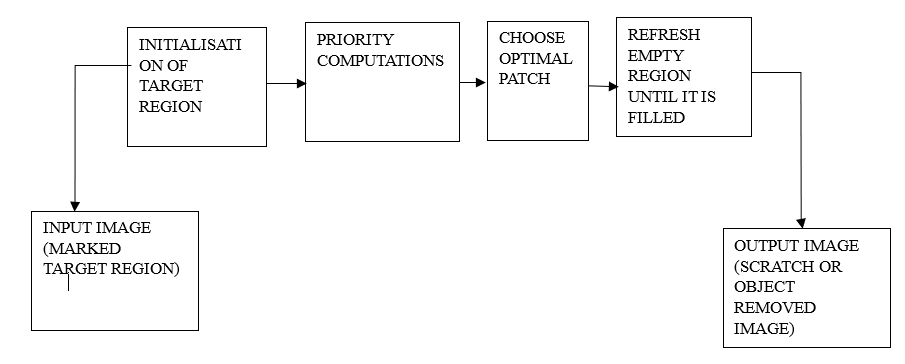Performance Analysis of Different Applications of Image Inpainting Based on Exemplar Technique
Main Article Content
Abstract
In this age of rapidly developing image processing, inpainting has been a popular and practical art. Researchers have paid considerable attention to image inpainting throughout the years due to its enormous significance and effectiveness in a wide range of image processing applications, including the removal of scratches, the elimination of objects, and the modification of faces. It is one of the most challenging issues in image processing, demanding a comprehensive understanding of the image's texture and structure. The quality of inpainted image is a crucial factor which determines how close the inpainted image is to the original image. Many improvements have been implemented in the exemplar-based approach to increase the quality of inpainted regions containing structure and texture information. There are numerous ways to assess the quality of an inpainted image. In this study, the applications of exemplar based inpainting are evaluated using standard analytical measures including Sum of Absolute Difference (SAD), Peak Signal-to-Noise Ratio (PSNR), Correlation Coefficient, and Structural Similarity Index Measure (SSIM).
Article Details
References
M. Bertalmio, G. Sapiro, V. Caselles, and C. Ballester, “Image inpainting,” in Proceedings of the 27th annual conference on Computer graphics and interactive techniques, SIGGRAPH ’00, New York, NY, USA: ACM Press/Addison-Wesley Publishing Co, 2000, pp. 417–424.
M. Manuel, B. Oliveira, R. Bowen, and Y.-S. Mckenna, “Fast Digital Image Inpainting”, in Proceedings of the International Conference on Visualization, Imaging and Image Processing, 2001.
A. Telea, “An image inpainting technique based on the fast marching method,” Journal of Graphics Tools, vol. 9, pp. 23–34, 2004.
T. F. Chan and J. H. Shen, “Mathematical models for local non-texture inpainting,”SIAM Journal of Applied Mathematics, vol. 62, pp. 1019–1043, 2002.
R. Leonid, I. Osher Stanle, and F. Emad, “Nonlinear total variation based noise removal algorithms”, Physica D: Nonlinear Phenomena, vol. 60, pp. 259–268, 1992.
T. F. Chan and J. H. Shen, “Non-texture inpainting by curvature-driven diffusions (CDD)”, Journal of Visual Communication and Image Representation, vol. 12, pp. 436–449, 2001.
A. A. Efros and T. K. Leung, “Texture Synthesis by Non parametric Sampling”,The Proceedings of the Seventh IEEE International Conference on Computer Vision, vol. 2, pp. 1033–1038, 1999.
A. A. Efros and W. T. Freeman, “Image Quilting for Texture Synthesis and Transfer,” in Proceedings of SIGGRAPH ’01, Los Angeles, California, 2001, pp. 341–346.
“Fragment-Based Image Completion”, Proceedings of ACM SIGGRAPH 2003, vol. 22, pp. 303–312, 2003.
A. Wong and J. Orchard, “A Nonlocal-means Approach to Exemplar-based Inpainting,” in Proceeding of 15th IEEE International Conference on Image Processing, 2008.
F. A. Guilin, K. J. Reda, T.-C. Shih, A. Wang, and B. Tao, Image Inpainting for Irregular Holes Using Partial Convolutions,2018.
D. Ding, S. Ram, and J. J. Rodríguez, “Image inpainting using nonlocal texture matching and nonlinear filtering,” in IEEE Transactions on Image Processing, 2018.
J. Zeng, X. Fu, L. Leng, and C. Wang, “Image inpainting algorithm based on saliency map and gray entropy,” Arabian Journal for Science and Engineering, 2019.
Y. Chen et al., “Research on image inpainting algorithm of improved total variation minimization method,” Journal of Ambient Intelligence and Humanized Computing, 2021.

